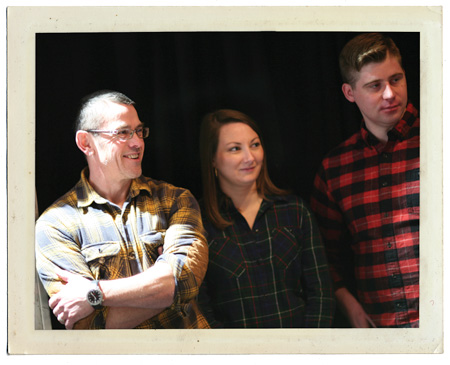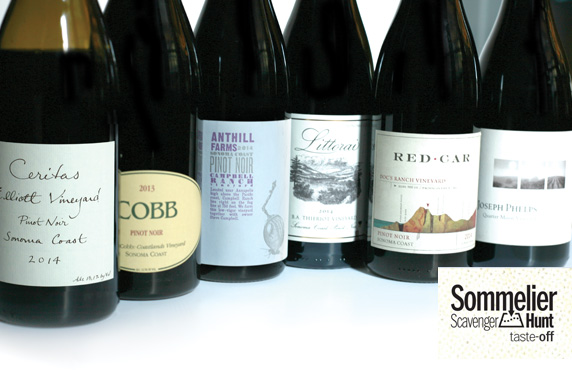Four teams compete to find the most site-expressive North American pinot noir
Pinot noir didn’t mean much to American wine drinkers until the early 2000s. Some, perhaps, knew it as the grape responsible for red Burgundy. Others might have been familiar with the pinot noirs from Hanzell, Calera, Au Bon Climat, Eyrie and Williams Selyem—some of the grape’s early American standard-bearers. But it wasn’t until the past decade that interest in pinot noir really exploded, driving a feverish planting boom. Now, there’s a lot being grown on our shores, some of it pretty great.
This year, twelve sommeliers joined in the Sommelier Scavenger Hunt. Each team of three chose a region, visiting fields and cellars to find pinot noirs with unmistakable terroir character.


David Sawyer, of Lilia in Brooklyn, cajoled his former Charleston colleague Cappie Peete of Husk, and his friend Jack Mason, MS, to head to the hills of the western Sonoma Coast, where pinot noir grows in small, isolated vineyards scattered along the coastal ridges. Their collection of wines captured the imaginations of the forty sommeliers and retailers who gathered at City Winery in NYC to taste and vote on the most compelling collection of terroir-expressive wines, and they finally broke the winning streak of Madrigale, Biscieglia and Baldivino.


Six Essential West Sonoma Coast Pinot Noirs
Cobb 2014 Coastlands Vineyard Diane Cobb Pinot Noir
“This is a super-beautiful, Burgundian expression of pinot noir, and was one of our favorite wines,” says Mason. It comes from a block of 18 different clones that winemaker Ross Cobb’s mother planted in 1989. It’s a cool site, on the first ridge in from the Pacific.
Red Car 2014 Doc’s Ranch Vineyard Pinot Noir
Doc’s Ranch is just a short walk from Coastlands, four miles from the Pacific, rising from 650 to 1,000 feet of elevation. “That wine was totally shocking,” says Peete. “We were saying it was Jura-like; it had all these really interesting earthy, spicy tones to it.”
Littorai 2014 B. A. Thieriot Vineyard Pinot Noir
This wrapped up a trio of wines from the same coastal ridge along Taylor Lane; this vineyard is planted on the inland side of the ridge, at 900 feet of elevation, five miles from the ocean. Peete finds it “a little more moderate-bodied,” a wine defined by its extraordinarily fine texture.
Anthill Farms 2014 Campbell Ranch Pinot Noir
This comes from the northern edge of the Sonoma Coast, not far from the Mendocino border; it’s close to the ocean, but gets plenty of sunshine. “This moves into a little bit darker fruit, and we are on the second ridge here, moving away from the ocean,” says Peete. “So a little bit fuller-bodied, a little bit darker-fruited, but it still has those amazing savory characteristics—tea and Asian spice.”
Ceritas 2014 Elliot Vineyard Pinot Noir
Elliot Vineyard is on the second ridge from the Pacific, four-and-a-half miles from the ocean, at 1,200 feet. “It’s warmer,” says Sawyer. “So you’re getting riper, richer fruit qualities, you’re getting blue fruit and a slightly heavier wine, but that savory element is running through like a black stripe of marble through the wine—it’s absolutely, positively always there.”
Joseph Phelps 2014 Freestone Quarter Moon Vineyard Pinot Noir
Like the first three wines, this comes from the Freestone-Occidental area, though farther inland. “Bigger, riper fruit, more alcohol—you’re at 14 percent here,” says Sawyer. “We tipped our hats—it’s absolutely brilliant wine. It’s the broader-shouldered big brother to the other siblings that come from this region, run through with a bullet of savory.”
This story was featured in W&S April 2017.
Longtime senior editor at Wine & Spirits magazine, Luke now works for the Stanford Technology Ventures Program.
This story appears in the print issue of April 2017.
Like what you read? Subscribe today.
















